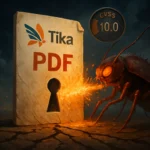Greetings, cyber enthusiasts! Today we’re journeying back to 2010 to immerse ourselves in the enigmatic story of Stuxnet — a worm virus that continues to captivate cybersecurity experts worldwide. Thanks to new revelations published in 2024, we now know surprising details about this operation that had never before been made public.
Stuxnet was no ordinary virus; it became the world’s first cyberweapon, radically transforming political and military strategies, and laying the groundwork for a new era — the era of cyberwarfare. This small but mighty worm had an outsized impact on global politics.
The Genesis of Stuxnet: The World’s First Digital Weapon
Unlike conventional malware whose primary goal is typically data theft or system destabilization, Stuxnet had a specific, strategic target — to sabotage Iran’s nuclear program. This cyber missile was aimed directly at Iranian nuclear centrifuges at the Natanz facility.
Historical and Geopolitical Context
Stuxnet’s development coincided with escalating tensions over Iran’s nuclear program. The international community, led by the United States and Israel, expressed concerns about potential military applications, while Iran insisted on its peaceful nature.
In this context, Stuxnet represented an alternative to conventional military intervention: a covert operation with “zero casualties” that could significantly delay Iran’s nuclear ambitions without firing a single bullet.
The “Flying Dutchman”: The Shocking 2024 Revelation
In January 2024, Dutch newspaper Volkskrant published an extraordinary revelation: the Dutch intelligence service AIVD played a crucial role in delivering the Stuxnet worm to the Iranian nuclear facility.
According to this investigation, in late 2004, the CIA and Mossad contacted Dutch intelligence requesting help to infiltrate the Natanz facility. The plan required someone who could operate in Iran without raising suspicions, something impossible for American or Israeli agents.
Erik Van Sabben: The Engineer Who Changed History
The chosen agent was Erik Van Sabben, a Dutch engineer married to an Iranian woman who worked for transport companies in Dubai. Van Sabben was recruited in 2005 and spent years building a credible cover:
- He created shell companies with Iranian employees
- He developed contacts and reputation in the Iranian sector
- He strategically positioned himself in a transport company (TTS) that served as an ideal entry point for specialized Western equipment into Iran
After a first failed attempt, Van Sabben managed to access the Natanz facility in 2007 posing as an engineer from an installation company that supplied peripheral equipment. During several visits, he collected crucial technical information about computer systems and centrifuges: speeds, temperatures, models, and versions.
With this information, American and Israeli teams refined Stuxnet’s code. In September 2007, Van Sabben introduced the malware into the facility via a simple USB drive, thus overcoming the “air gap” (physical separation from the internet) that protected the nuclear facilities.
In a tragic twist, Van Sabben died in a motorcycle accident in Sharjah, near Dubai, on January 16, 2009, long before the world learned of Stuxnet’s existence. His crucial role in this historic operation remained secret until the 2024 revelations.
Mechanism of Action: A Masterpiece of Malicious Engineering
Stuxnet’s technological brilliance lay in its extraordinary specificity. The malware activated only when it identified its exact target: Siemens industrial control systems managing specific processes at nuclear facilities.
The Four Zero-Day Exploit Attack
What made Stuxnet truly exceptional was its use of four zero-day vulnerabilities (previously unknown) to propagate — unprecedented in malware history:
- LNK File Exploitation: Allowed infection via USB drives
- Print Spooler Vulnerability: Facilitated propagation across local networks
- Windows Task Scheduler Flaws: Granted elevated privileges
- Siemens STEP 7 Vulnerabilities: Enabled manipulation of industrial controllers
The Deadly Centrifuge Dance
Once installed, Stuxnet subtly altered the rotation speed of uranium enrichment centrifuges, causing them to self-destruct while displaying normal readings to operators. The worm modified the operation of release valves, increasing the pressure in the centrifuges to extreme levels.
This “ghost” attack created months of confusion among Iranian engineers who bewilderedly observed how their expensive centrifuges failed inexplicably while their monitors showed nothing anomalous.
Authorship and Consequences: The Mystery That Transformed Geopolitics
Although no country has officially acknowledged responsibility, we now know that Stuxnet was a joint operation by the United States (CIA) and Israel (Mossad) with the critical collaboration of Dutch intelligence services (AIVD). The operation, known under the code name “Olympic Games,” was initiated during the Bush administration and continued under President Obama.
Impact on Iran’s Nuclear Program
By estimates, Stuxnet damaged approximately 1000 Iranian centrifuges, significantly delaying the country’s nuclear ambitions. The then-head of Mossad claimed that the attack had delayed Iran’s nuclear program by at least one year, while other assessments suggest a delay of between 2 and 4 years.
Security researcher Ralph Langner described Stuxnet as “the technological equivalent of the Aurora bombings” (referring to Israeli airstrikes on nuclear reactors).
According to a 2011 report by the International Atomic Energy Agency (IAEA), Iran’s uranium enrichment program suffered significant setbacks that aligned with the timeline of Stuxnet’s deployment.
Stuxnet’s Legacy: The Democratization of Advanced Cyberweapons
Stuxnet opened Pandora’s box, creating a precedent for state-sponsored cyberattacks and defining a new geopolitical battlefield. Its successors, such as Duqu, Flame, and Gauss, demonstrated that the digital battlefield is alive and continuously evolving.
The Post-Stuxnet Era
Following Stuxnet, the world has witnessed a proliferation of sophisticated state-sponsored cyberattacks:
- 2014: Sony Pictures attack, attributed to North Korea
- 2015-2016: BlackEnergy and attacks on Ukrainian power grid
- 2017: NotPetya, causing over $10 billion in damages globally
- 2020-2021: SolarWinds, a supply chain attack of unprecedented scope
Former NSA Director Michael Hayden remarked that Stuxnet had “crossed the Rubicon” and ushered in a new age of digital warfare.
Lessons for Modern Cybersecurity
What can we learn from this story? Cybersecurity isn’t just about protecting personal data, but also defending critical infrastructure and maintaining geopolitical balance.
Stuxnet taught us that:
- Critical infrastructure is vulnerable: Industrial systems, designed for functionality rather than security, represent attractive targets
- Air-gapping is insufficient: Even systems disconnected from the internet can be compromised
- The human factor remains decisive: Despite all technological barriers, it was a human agent who physically introduced the malware into the facility
- Malware can have physical consequences: Cyberattacks can cross the boundary between digital and physical
- Attribution is complex: Determining with certainty the authors of sophisticated cyberattacks remains extremely difficult, and the complete truth may take decades to reveal
Final Reflections: The Paradigm Shift in International Security
Stuxnet marked a turning point in the history of cybersecurity and international relations. It demonstrated that 21st-century conflicts would be fought in cyberspace as much as on traditional battlefields.
The operation, which cost approximately one billion dollars according to some estimates, leads us to question the ethical and legal dimension of such actions. As the Volkskrant newspaper points out, sabotaging Iran’s nuclear program could have been considered an act of war at the time. The Netherlands was not in conflict with Iran, which raises important questions about which Dutch authorities knew about the operation and whether its potential geopolitical consequences were adequately discussed.
The emergence of this sophisticated cyberweapon forces us to rethink fundamental concepts such as sovereignty, deterrence, and balance of power in the digital age. As we navigate this new landscape, one thing is clear: cybersecurity is no longer merely a technical matter but has become a fundamental pillar of national security and global stability.
The story of Stuxnet reminds us that we live in an era where code can be as destructive as conventional weapons, and where computer security has become a matter of national security.
As former CIA director Leon Panetta warned in 2012, we now live in a world where the “next Pearl Harbor could be a cyberattack.” Stuxnet was the harbinger of this new reality.






